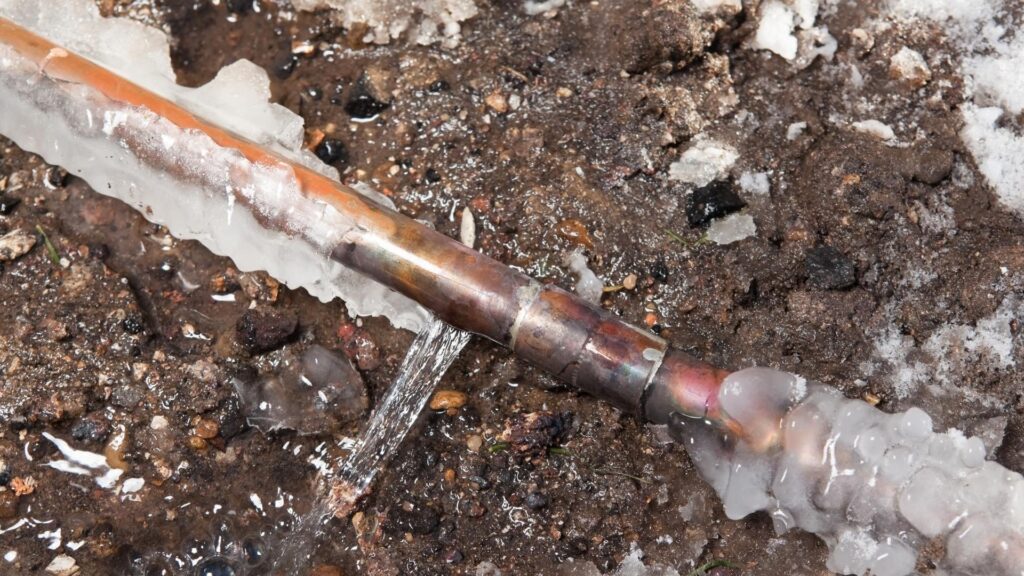Winter brings with it a picturesque landscape of snow-covered landscapes and cozy evenings by the fire. However, it also brings the risk of frozen pipes, a common and potentially damaging issue for homeowners. Frozen pipes can lead to burst pipes and water damage if not addressed promptly. Recognizing the signs of frozen pipes and knowing how to recover from them can help homeowners mitigate the risk and protect their property.

Recognizing Frozen Pipes:
- Decreased Water Flow: One of the first signs of frozen pipes is a noticeable decrease in water flow from faucets or fixtures. If you turn on a faucet and only a trickle of water comes out, it could indicate that the pipe supplying water to that fixture is frozen.
- Frost on Exposed Pipes: Inspect any exposed pipes in your home, such as those in basements, crawl spaces, or attics. If you notice frost or ice buildup on the pipes, it’s a clear indication that they are frozen.
- Strange Odors: Frozen pipes can sometimes emit strange odors, such as a musty or sewage-like smell. This can occur if a blockage in the pipe is preventing wastewater from draining properly.
- Visible Damage: In severe cases, frozen pipes can lead to visible damage, such as bulging or cracking. If you notice any signs of damage to your pipes, it’s crucial to address the issue immediately to prevent burst pipes and water damage.
Fixing Your Frozen Pipes:
- Locate the Frozen Pipe: Start by identifying which pipes are frozen. Focus on areas where pipes are most likely to freeze, such as those located in unheated areas of your home or along exterior walls.
- Thaw the Pipe: There are several methods you can use to thaw a frozen pipe safely. You can apply gentle heat to the pipe using a hairdryer, heat lamp, or electric heating pad. Alternatively, you can wrap the pipe in towels soaked in hot water or use a portable space heater to warm the surrounding area.
- Open Faucets: Once you begin thawing the pipe, open the faucet connected to the frozen pipe to allow water to flow freely. This will help relieve pressure in the pipe and prevent it from bursting once it thaws.
- Inspect for Damage: After thawing the pipe, carefully inspect it for any signs of damage, such as cracks or leaks. If you discover any damage, it’s essential to repair or replace the affected section of pipe as soon as possible to prevent further issues.
- Prevent Future Freezing: Take steps to prevent your pipes from freezing in the future. Insulate exposed pipes with foam pipe insulation or heat tape, especially those in unheated areas. Keep cabinet doors open to allow warm air to circulate around pipes under sinks. And during extremely cold weather, let faucets drip slightly to keep water moving through the pipes.
Conclusion:
Frozen pipes are a common problem during the winter months, but with vigilance and prompt action, homeowners can minimize the risk of damage to their property. By recognizing the signs of frozen pipes and knowing how to safely recover from them, homeowners can protect their plumbing system and ensure their home stays warm and comfortable all winter long.
